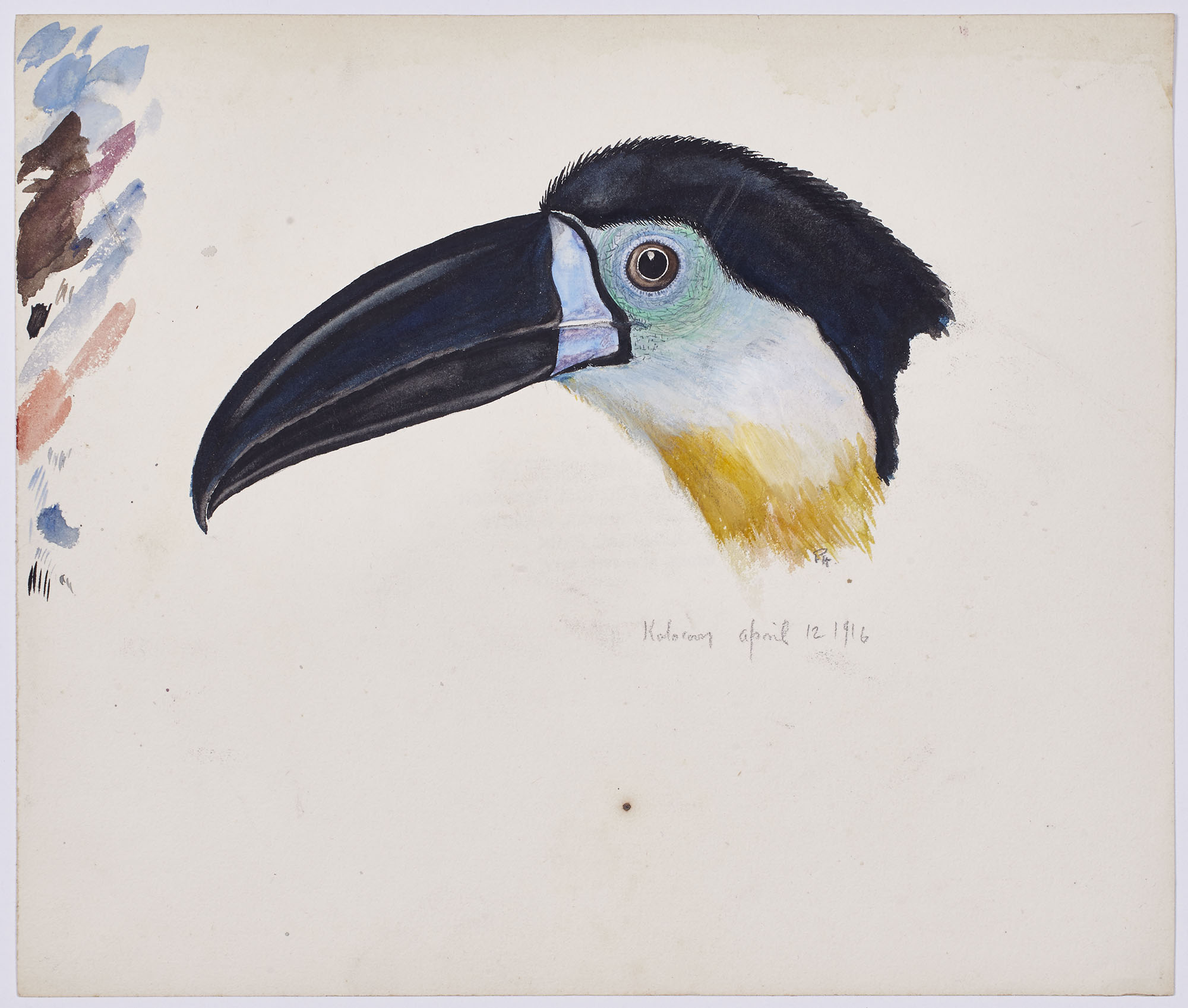BRONX ZOO (March 22, 2021) – The Wildlife Conservation Society (WCS) released to the public a digital collection of some 2,200 forgotten, historical scientific wildlife illustrations from its Department of Tropical Research (DTR), which it ran from 1916 to 1965.
The stunning illustrations include montages of otherworldly deepwater fish, stately portraits of sloths, strange insects, brightly colored birds, snakes, frogs, and other wildlife. Many of the illustrations seem almost whimsical, yet are scientifically accurate.
The Department of Tropical Research operated in an era when photography could not capture color and movement. The illustrators were vital to documenting the species the DTR studied and to introducing both technical and popular audiences to these species.
Said Dr. Madeleine Thompson, WCS Director of Library and Archives: “Whereas most conservationists today use digital cameras, in the DTR’s era they relied on artists to document their findings. The illustrations in this archive are artistically beautiful but also important scientific records of what, at the time, were wildlife species often little-known to Western audiences.”
The Department of Tropical Research was led by first Bronx Zoo Curator and famed naturalist William Beebe. It was a division of the Wildlife Conservation Society, then known as the New York Zoological Society. The sites where the DTR worked include British Guiana (now Guyana), the Galápagos Islands, the Hudson Canyon, Bermuda, the Gulf of Mexico and the Eastern Pacific Ocean, Venezuela, and Trinidad.
In 1965, the DTR became part of the Institute for Research in Animal Behavior, a joint venture between WCS and Rockefeller University, and a direct precursor to today’s WCS Global Conservation Program.
The staff of the DTR included scientists and artists who worked collaboratively to document the species they were observing and collecting. The artists known to be represented in the digital collection are Toshio Asaeda, Harriet Bennett (later Strandberg), Else Bostelmann, Douglas Boyden, John Cody, Isabel Cooper (later Mahaffie), Donald Dickerman, Dwight Franklin, Kenneth Gosner, Paul G. Howes, Llewellyn Miller, Laura Schlageter, George Swanson, Helen Damrosch Tee-Van, Elswyth Thane, and Ezra Winter.
The DTR is notable for including women among its staff at a time when there were few women artists who traveled on expeditions and few women scientists.
Within the DTR, scientists and artists worked collaboratively to document the species they were observing and collecting. Artists were not simply decorators of scientists’ writings; they were integral communicators of the team’s findings. The DTR published for scientific audiences, and the illustrations appeared in technical publications. Yet the DTR’s greater impact was on public audiences. Beebe’s books were bestsellers, the DTR’s work was featured in the popular press—including the New York Times, National Geographic Magazine and Popular Science—and they gave presentations to public audiences. Central to these forms of popular science communication were the illustrations, which helped to shape U.S. audiences’ understandings of tropical regions and their flora and fauna.
The digital collection was funded by Malcom and Delaine Strandberg in memory of William Beebe and Harriet E. Bennett Strandberg, one of the DTR artists and Malcom’s mother., Harriet was also Beebe’s cousin, and Beebe was Malcom’s godfather.
The digital collection project was completed by WCS Library and Archives staff members. The Library & Archives advances knowledge in support of WCS’s mission to save wildlife and wild places. It provides information services to foster WCS’s leadership in science-based conservation, it preserves WCS’s robust record of activities, and it enhances understanding of WCS’s rich legacy.
###
WCS (Wildlife Conservation Society)
MISSION: WCS saves wildlife and wild places worldwide through science, conservation action, education, and inspiring people to value nature. To achieve our mission, WCS, based at the Bronx Zoo, harnesses the power of its Global Conservation Program in nearly 60 nations and in all the world’s oceans and its five wildlife parks in New York City, visited by 4 million people annually. WCS combines its expertise in the field, zoos, and aquarium to achieve its conservation mission. Visit: newsroom.wcs.org Follow: @WCSNewsroom. For more information: 347-840-1242.
